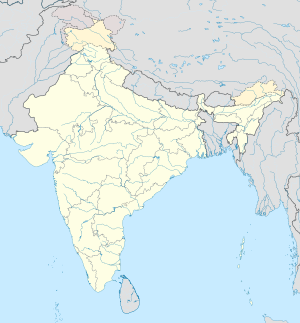Demolition of Babri Mosque
| Demolition of the Babri Masjid | |
|---|---|
| Location | Ayodhya, India |
| Date | 6 December 1992 |
| Target | Babri Masjid |
|
Attack type
|
Riots |
| Deaths | 2,000 (including ensuing riots) |
| Perpetrators | Vishva Hindu Parishad Kar Sevaks |
On 6 December 1992, a large crowd of Hindu Kar Sevaks (volunteers) demolished the 16th-century Babri Mosque in the city of Ayodhya, in Uttar Pradesh. The demolition occurred after a political rally at the site turned violent.
In Hindu mythology, the city of Ayodhya is the birthplace of the God-king Rama. In the 16th century a Mughal general, Mir Baqi, had built a mosque, known as the Babri Masjid, at a site considered by some Hindus to be Ram Janmabhoomi, the actual birthplace of Rama. In the 1980s, the Vishva Hindu Parishad (VHP) began a campaign for the construction of a temple dedicated to Rama at the site, with the Bharatiya Janata Party (BJP) as its political voice. Several rallies and marches were held as a part of this movement, including the Ram Rath Yatra led by L. K. Advani.
On 6 December 1992 the VHP and the BJP organised a rally at the site involving 150,000 volunteers, known as kar sevaks. The rally turned violent, and the crowd overwhelmed security forces and tore down the mosque. A subsequent inquiry into the incident found 68 people responsible for the demolition, including several leaders of the BJP and the VHP. The demolition also resulted in several months of intercommunal rioting between India's Hindu and Muslim communities, causing the death of at least 2,000 people.
According to Hindu belief, Ram Janmabhoomi, in the city of Ayodhya, is the birthplace of the God-king Rama. It is therefore considered one of the most sacred religious sites in the Hindu religion. In 1528, following the Mughal invasion of North India, a mosque was built at the site by the Mughal general Mir Baqi, who came to be named after emperor Babur. According to sources, Mir Baqi destroyed a pre-existing temple of Rama at the site. For at least four centuries, the site was used for religious purposes by both Hindus and Muslims. In 1859, soon after the first recorded incidents of religious violence at the site, the British colonial administration set up a railing to separate the outer courtyard of the mosque to avoid disputes. The status quo remained in place until 1949, when idols of Rama were surreptitiously placed inside the mosque, allegedly by volunteers of the Hindu Mahasabha. This led to an uproar, with both parties filing civil suits laying claim to the land. The placing of the idol was seen as a desecration by the users of the Masjid. The site was declared to be in dispute, and the gates to the Masjid were locked.
...
Wikipedia

